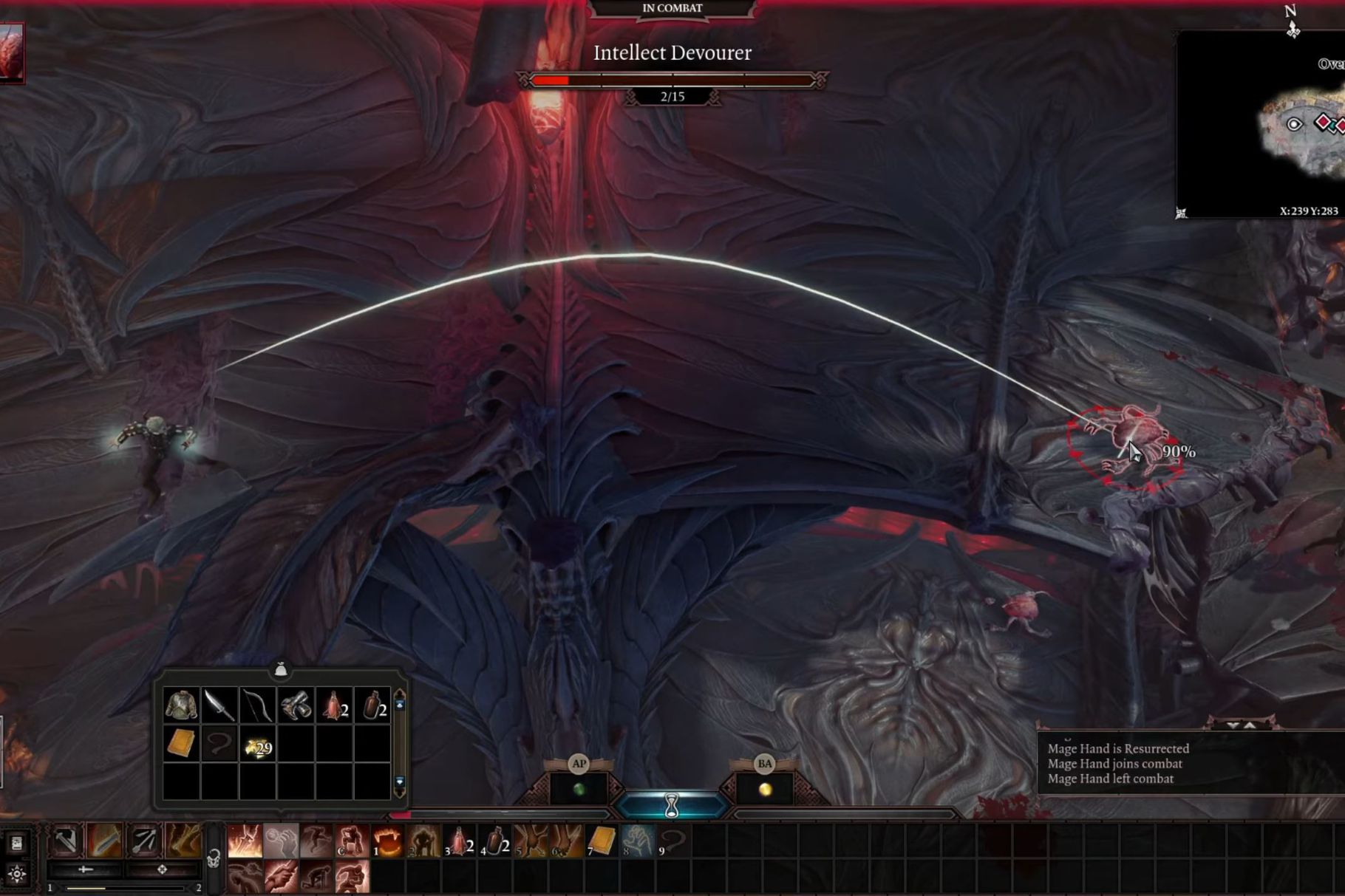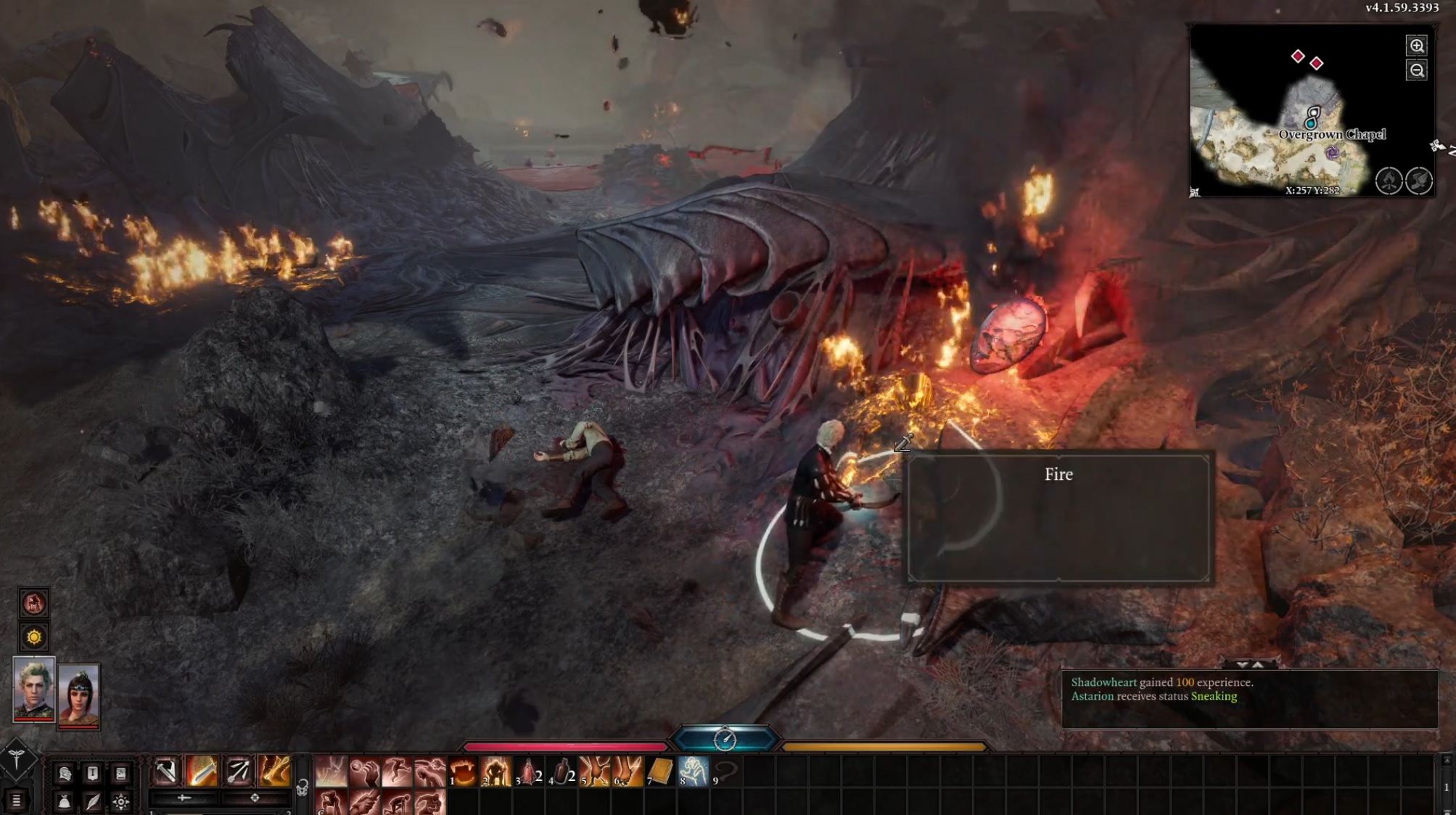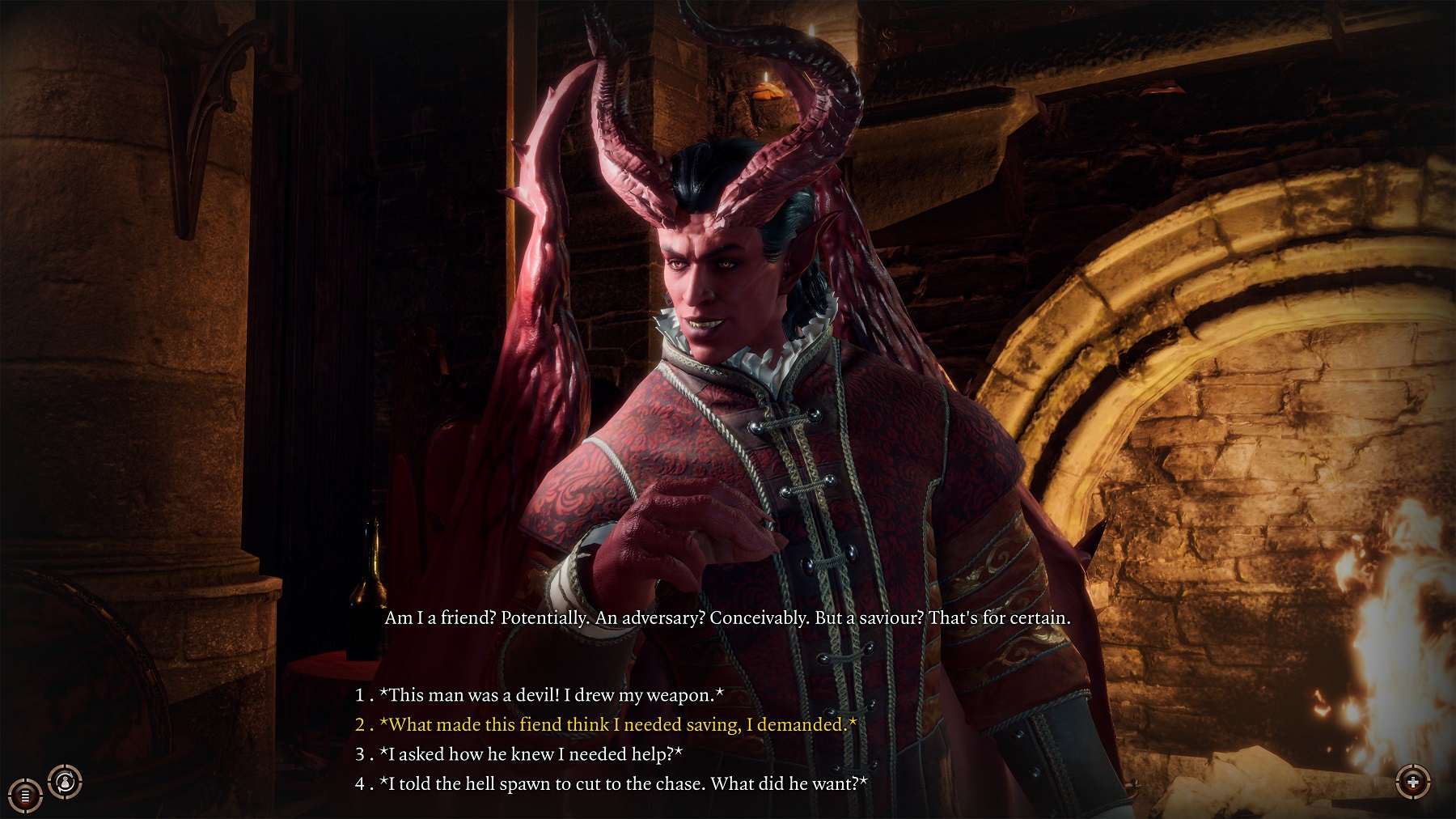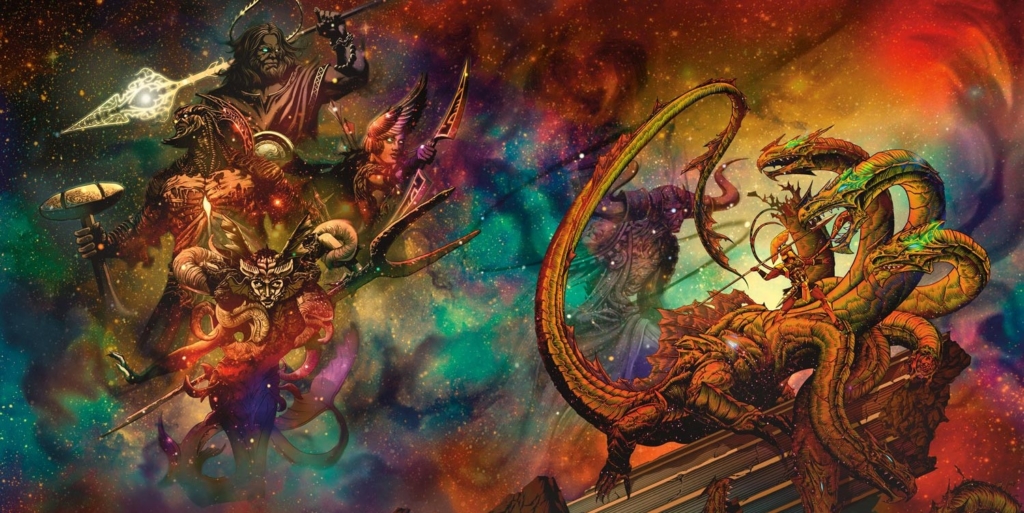D&D: Combat & Romance In Baldur’s Gate 3 – New Details Emerge
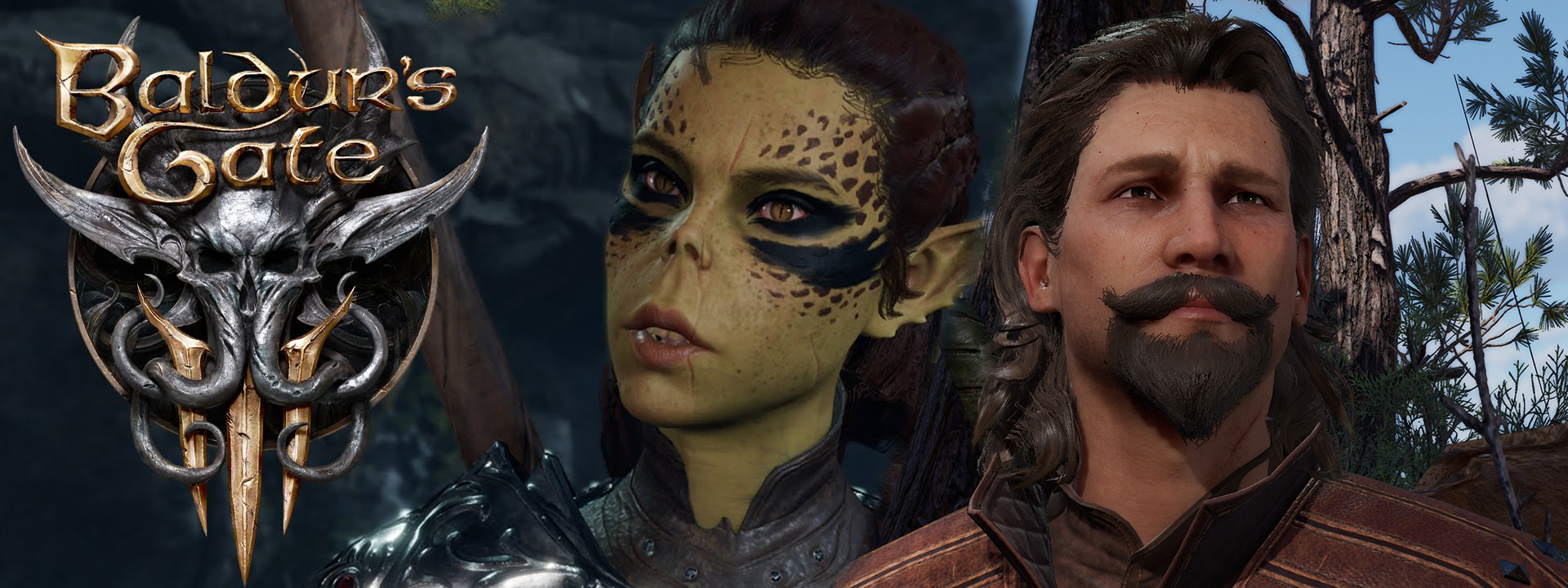

Baldur’s Gate 3 made waves with its demo last week–now new details about NPC romance and combat have emerged. Take a look.
The battle is not going well for Larian CEO Swen Vincke. Amid the fiery wreckage of a downed Mind Flayer nautiloid ship, his elven vampire has been outmaneuvered by ravenous intellect devourers. His rogue has been struggling to deal enough damage to the dog-like brains on legs before they overwhelm and consume the rest of the party. Low on hit points as he squares off against one Vincke tries a desperation maneuver, taking off his boots and hurling them at his foe rather than risk losing his last HP.
It’s a risky gambit, but it works and the audience cheers. After all, everyone loves a good Boot to the Head. This is just one dramatic example of the kinds of shenanigans you can get up to in Baldur’s Gate 3, which audiences got their first taste of this past Thursday. Since then, more details about the game have emerged, as the Lead Writer and Combat designers revealed in interviews with VG24/7 Screenrant.
Since we’re talking about combat, let’s dig a little deeper. One of the things that players were treated to was a sampling of the elemental and environmental effects that players can use. Players might hurl a firebolt at a puddle of water to create a bit of steamy fog. As combat designer Matt Holland puts it:
What we want to do when we create any encounter, be it a situation, quest, or combat, we want the player to look at that and think, “how can I solve this my way?” We want them to role-play, and figure out how to get an advantage in any situation. That’s something we did in the Divinity: Original Sin games, and it’s something we want to one-up, two-up, and three-up in Baldur’s Gate III. We want you to be able to feel like you’re talking to your DM and find the wackiest way to solve any problem you have. Dialogues are all very personal. So your options are based on who you are as a character. So the vampire Astarion has his own options compared to the wizard, Gale.
It’s all based on elements of race, background, and previous choices you’ve made in the game. For combat, we have a heavy emphasis on environmental interaction. So if you put grease on the ground, what happens if you put fire on that? Boom! Right? If there’s water on the ground, and you zap it with electricity, the floor is electrified. Good luck standing in that. We carried that aspect over from Divinity: Original Sin II, and now we’re adding mechanical environmental interactions. So, if you’re standing on a rickety platform, I can find the support beam for that platform and break it so you fall down and take fall damage. And little things like being able to climb up get a height advantage. And having one character climbing atop the rafters to launch sneak attacks while the other characters are fighting the goblin king.
But combat is only part of the Baldur’s Gate equation. As fans of BioWare’s previous outings know, NPC interactions and romance, steamy or sweet, have been a hallmark of the franchise (and BioWare’s later offerings as well). And Larian’s lead writer on the game, Adam Smith was quick to point out that the same focus on dialogue and NPC interaction is still here, just in a format more in line with Larian’s identity. What does that mean exactly?
Part of it is making failure fun. So especially in dialogues, it’s like, sometimes if you fail a roll then you’re probably going to have a more interesting experience. Sometimes it’s fun when you fail. The flip side of that is, it’s not fun if you fail and you just get punished and have to quick-load. That sucks. So there’s a balance to be made between making things interesting that happen when you do badly, and giving you cool things to get out of, cool problems, basically. Or just entirely, again, from the dialogue side, completely new branches that you might not have got. There are points where if you f**k up a roll in dialogue, you might end up meeting somebody you never would have met before. Getting thrown in jail can be really good fun, because suddenly you get to meet other criminals.
Smith has a lot of hope for people getting a variety of gameplay experiences out of their time in Baldur’s Gate 3. Whether that means discovering hidden dialogue trees that come up only as a result of hidden quirks and failures, or gleefully killing characters within minutes of even just seeing them.
Dialogue is gameplay. There’s a huge amount of gameplay within the dialogues. But really, the honest answer is, if people are smiling and laughing and killing a character that I spent three weeks writing, without even saying ‘Hello,’ to it, I’m pretty happy, to be honest. Because that’s more important.
That’s all well and good, but let’s talk about romantic options for a bit. Because that’s another big part of any of these games, if the internet has taught me anything. In BG3, players have the option of playing as one of the Origin Stories, which are pre-set characters with their own backstories and expanded dialogue in certain areas or creating their own custom character. Whichever you choose, the other Origin Stories are available as NPC companions that you can recruit later in the game, and if you can recruit them you can romance them. Any companion is capable of romancing any other companion, though it might not always be the way you expect.
Smith details a scenario in which Lae’zel, the Githyanki option, might start a romance with a character–but Githyanki aren’t really monogamous:
So if you sleep with Liselle one night at camp, the next night you might well just find her sleeping with somebody else. And she’s going to be like, ‘oh, that was a bit of fun, wasn’t it? How are you doing?’ And you’re just like, ‘oh!’ Heartbroken!
The goal for Baldur’s Gate 3 is to make romance feel alive and a part of the normal interaction as well:
We don’t want to make it into this romance system which is, ‘I earned this person.’ We want it to feel more real. We want to have jealousy. We want to have just great joy in it, as well. But yes, we don’t want it to be a case of, ‘you brought me the gift that I like the most, so you got +50 affection.’ It’s much more based on how you deal with them, and the things you do. So when I say, ‘everyone’s romanceable by everybody else,’ that’s not in every playthrough. And in multiplayer, you can literally end up on opposite sides as the other players, which is really cool. You can end up on two different sides of a big battle, because you just chose different sides at that point. And then you just separate and go your own ways.
The same dedication holds true for following multiple storylines as well. You can have up to four total players in your party and each can separate and go off their own ways. Each of the Copmanion stories are all intrinsically tied to the main story, and their own wants and fears that players will have to negotiate, with difficult decisions waiting further down the line.
Until then, we’ll just have to wait.
In the meantime, happy adventuring!

